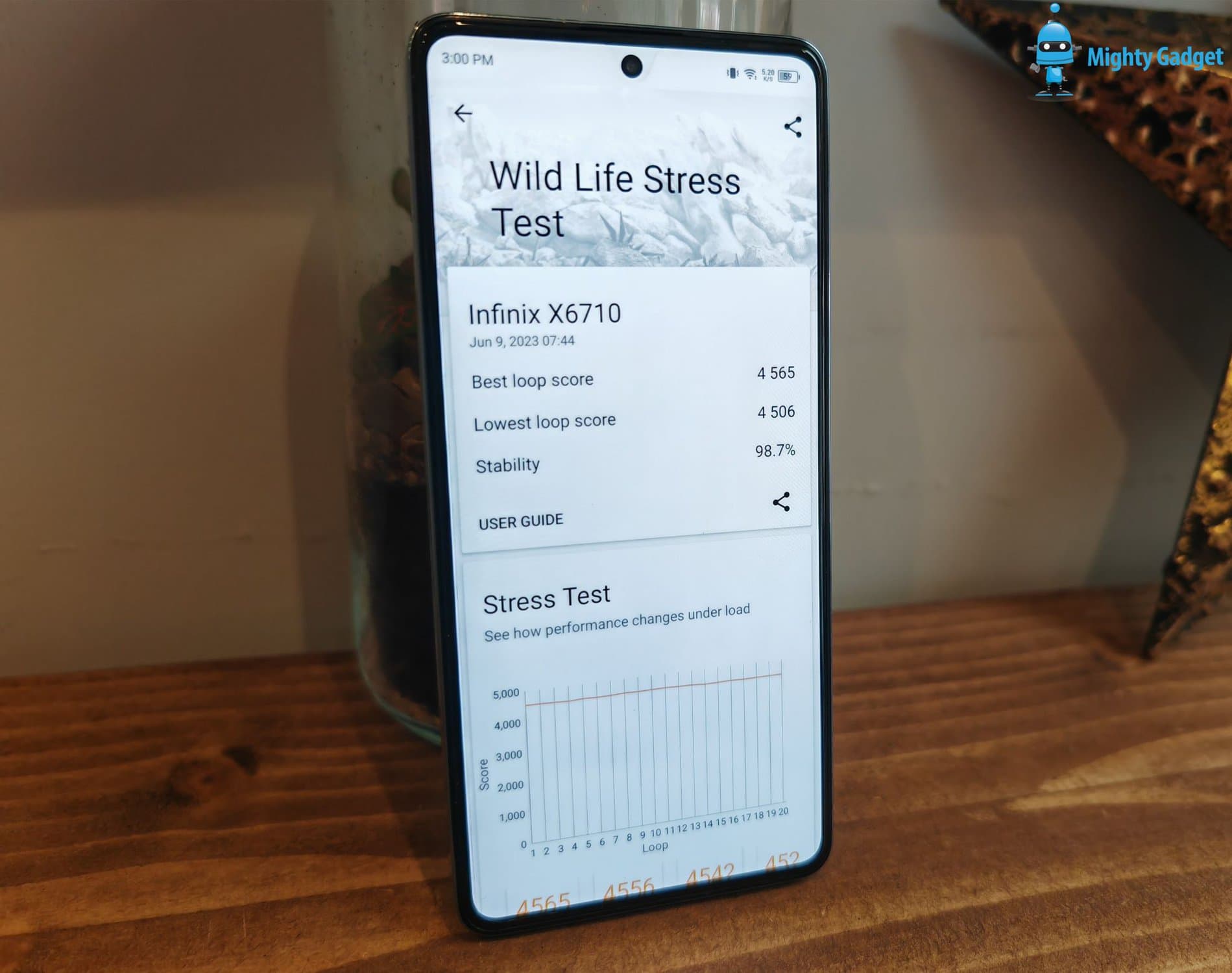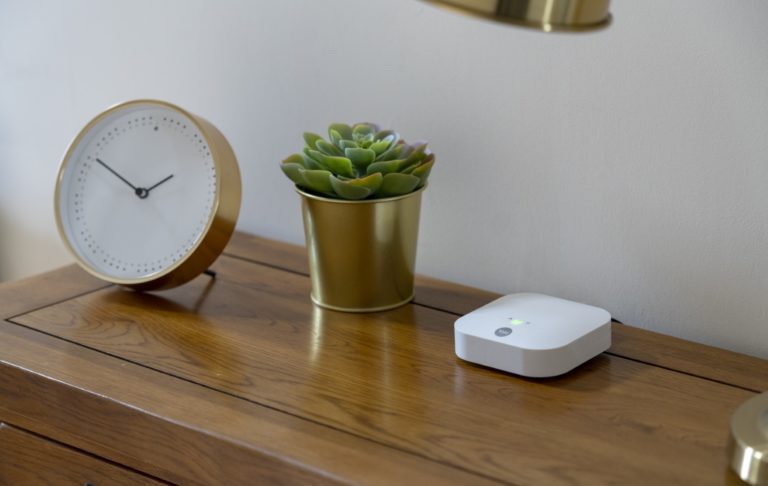Any links to online stores should be assumed to be affiliates. The company or PR agency provides all or most review samples. They have no control over my content, and I provide my honest opinion.
The Infinix Note 30 VIP has just been announced with the new mid-range MediaTek Dimensity 8050 chipset. This is the most powerful Infinix phone that has launched to date and has an impressive spec all around.
This time last year, I reviewed the Realme GT Neo 3, which is equipped with the Dimensity 8100 and benchmarked this against the SD870, which was used don’t Realme Neo 3T.
Based on the naming, you’d think the Dimensity 8050 is the same as the 8100 with some minor differences to reduce cost/performance.
However, the two chipsets are quite different. For a start, the Dimensity 8050 is produced on the older 6nm fabrication process; it then uses a different GPU and also uses slower LPDDR4X memory.
While this may not be quite as good as the Dimensity 8100, the Dimensity 8050 is a superb chipset, and I have found it more than capable for all my needs.
Mediatek Dimensity 8050 vs Dimensity 8100 Specification
| Mediatek | Dimensity 8050 | Dimensity 8100 |
|---|---|---|
| Process | TSMC N6 (6nm) | 5nm TSMC |
| CPU | 1x Cortex-A78 @ 3GHz 3x Cortex-A78 @ 2.6GHz 4x Cortex-A55 @ 2GHz | 4x Arm Cortex-A78 @ 2.85GHz 4x Arm Cortex-A55 @ 2Ghz |
| GPU | Mali-G77 MC9 980 Gigaflops | Arm Mali-G610 MC6 1309 Gigaflops |
| Memory | LPDDR4X 2133 MHz | LPDDR5 3200 MHz |
Mediatek Dimensity 8050 vs Dimensity 8100 Benchmarks
Antutu

| Antutu | Total | CPU | GPU | MEM | UX |
|---|---|---|---|---|---|
| Snapdragon 8 Gen 3 iQOO 12 | 2084308 | 446149 | 906269 | 400131 | 331759 |
| Snapdragon 8 Gen 3 Samsung Galaxy S24 Ultra | 1945797 | 445818 | 817997 | 373210 | 308772 |
| Snapdragon 8 Gen 2 Honor Magic5 Pro V10 | 1367374 | 298680 | 583069 | 259642 | 225983 |
| Google Tensor G3 Pixel 8 Pro V10 | 1144447 | 355374 | 381544 | 177818 | 229711 |
| Dimensity 8200-Ultra Xiaomi 13T V10 | 896827 | 260471 | 230211 | 192345 | 213800 |
| MediaTek Dimensity 8100 Realme GT Neo 3 V10 | 871235 | 260194 | 215150 | 180938 | 214956 |
| Google Tensor G2 Pixel 7 Pro V10 | 848876 | 231239 | 289398 | 141067 | 187172 |
| Google Tensor Pixel 7 6 V10 | 845450 | 249800 | 236824 | 157931 | 200895 |
| MediaTek Dimensity 8050 Infinix Note 30 VIP V10 | 732420 | 205125 | 184374 | 158126 | 184795 |
Both Antutu and Geekbench have updated to new versions, and the results between versions are different. I was able to find a V9 version to test the Infinix Note 30 VIP, and I retested the Realme GT Neo 3 with V10.
With Antutu, there was a bigger difference in the results than I expected. With the V10 test, the total score is 19% higher for the Dimensity 8100, with a 27% advantage with the CPU score. The GPU result is 17% higher, but this was to be expected as the Dimensity 8100 uses a higher-spec Mali-G610 GPU.
Geekbench 5 and 6


| Geekbench 5 | Chipset | Single Core | Multi Core |
|---|---|---|---|
| Honor Magic5 Pro | Snapdragon 8 Gen 2 | 1481 | 4932 |
| Honor Magic4 Pro | Snapdragon 8 Gen 1 | 1220 | 3569 |
| Xiaomi Mi 11 | Snapdragon 888 | 1139 | 3693 |
| OnePlus 9 Pro | Snapdragon 888 | 1109 | 3487 |
| Samsung Galaxy S21 Ultra | Exynos 2100 | 1079 | 3381 |
| Google Pixel 6 | Google Tensor | 1042 | 2957 |
| Xiaomi | Dimensity 8200-Ultra | 1005 | 3744 |
| OPPO Find X5 Pro | Snapdragon 8 Gen 1 | 976 | 3484 |
| Asus ROG Phone 3 S | Snapdragon 865+ | 975 | 3357 |
| Realme GT Neo 3 | Dimensity 8100 | 966 | 3672 |
| OPPO Find X3 Pro | Snapdragon 888 | 928 | 3357 |
| Realme X50 Pro | Snapdragon 865 | 910 | 3205 |
| Infinix Note 30 VIP | Dimensity 8050 | 854 | 3047 |
| Redmi K30 Ultra | Dimensity 1000+ | 782 | 2890 |
| Samsung Galaxy S20 | Exynos 990 | 772 | 2590 |
I benchmarked this with the latest and previous versions of Geekbench, just to give a better comparison.
Results are predictable, the Mediatek Dimensity 8050 is better for single-core performance because it has that single core that has a higher clock. Then multi-core favours the Dimensity 8100 due to the other three A78 cores being clocked at 2.85GHz vs 2.6GHz.
Looking at Geekbench 5, which I have used across a lot of devices. The Dimensity 8050 fairs well. The CPU score for the Dimensity 8100 is suspiciously high, which makes me question how accurate the CPU result is for both Geekbench and Antutu.
It is only the Snapdragon 8 Gen 2 where you see a massive increase in multi-core performance. Even with the single core, the Snapdragon 888 was all over the place among brands. It was the SD8 Gen1 and Gen2 that the single core performance significantly improved.


3DMark Wild Life Stress Test & Thermal Throttling
| 3DMark | Chipset | Wild Life High | Wild Life Low | Stability | Temperature | Battery |
|---|---|---|---|---|---|---|
| iQOO 12 Retest | Snapdragon 8 Gen 3 | 18346 | 12144 | 66.2% | 26° to 42° | 87% to 73% |
| iQOO 12 First Test | Snapdragon 8 Gen 3 | 18087 | 7549 | 41.7% | 25° to 39° | 96% to 82% |
| Samsung Galaxy S24 Ultra | Snapdragon 8 Gen 3 | 17580 | 9828 | 55.9% | 24° to 42° | 79% to 66% |
| Honor Magic5 Pro | Snapdragon 8 Gen 2 | 12726 | 8567 | 67.3% | 19° to 38° | 100% to 92% |
| Honor Magic4 Pro | Snapdragon 8 Gen 1 | 10189 | 6445 | 63.3% | 24° to 44° | 86% to 72% |
| OPPO Find X5 Pro | Snapdragon 8 Gen 1 | 9537 | 6060 | 63.5% | 21° to 44° | 33% to 23% |
| Pixel 8 Pro | Google Tensor G3 | 8434 | 5599 | 66.4% | 27° to 44° | 83% to 72% |
| Pixel 7 Pro | Google Tensor G2 | 6527 | 4766 | 73% | ||
| Pixel 6 | Google Tensor | 6908 | 3487 | 50.5% | ||
| Xiaomi 13T | Dimensity 8200-Ultra | 6485 | 5879 | 90.7 | 28° to 42° | 83% to 74% |
| OnePlus 9 Pro | Snapdragon 888 | 5775 | 3489 | 60.3% | ||
| OPPO Find X3 Pro | Snapdragon 888 | 5765 | 3804 | 66% | ||
| Samsung Galaxy S21 Ultra | Exynos 2100 | 5466 | 6404 | 62.3% | ||
| Xiaomi Mi 11 | Snapdragon 888 | 5550 | 5045 | 90.9% | ||
| Realme GT | Snapdragon 888 | 5850 | 3234 | 55.3% | ||
| Oppo Find X3 Neo | Snapdragon 865 | 5038 | 4942 | 98.1% | ||
| Realme GT Neo 3 | Dimensity 8100 | 5446 | 5399 | 99.1% | 32° to 38° | 100% to 94% |
| Infinix Note 30 VIP | Dimensity 8050 | 4565 | 4506 | 98.7 | 31° to 46° | 100% to 91% |
| OnePlus Nord 2 | Dimensity 1200 | 4161 | 2932 | 70.5% |
The Infinix Note 30 VIP is no slouch when it comes to gaming. With the 3DMark Wild Life stress test, the peak scores it achieves may not be amazing, but the overall performance is a touch higher than the Qualcomm Snapdragon 870 that was used on the Realme GT Neo 3T. Unless you are a very serious gamer, I think this is a perfectly acceptable performance giving you a good balance of price to performance.
Compared to the Dimensity 8100, even though the CPU has a very similar specification, there is clearly a significant amount of difference in the GPU performance. The result is that the Dimensity 8100 achieves a peak score that is 19% higher than the Dimensity 8050.
When comparing it to other recent chipsets, it is the stability that stands out. If you look at the Pixel 6, which is my day-to-day phone, with the Google Tensor chipset, it may score a massive peak score that’s over 50% higher than the Dimensity 8050, but due to the ridiculous thermal throttling, the low score ends up being 24% lower. For gaming, you will be better off with superior sustained performance than a very high peak performance.
PCMark & Battery Test


I am not keen on the normal PCMark test, as the results vary wildly between brands. Though I guess it shows how a specific company has tuned the chipset to perform certain tasks.
With both the Realme and Infinix, the CPU clock appears to stay locked at 100%, which will give them a higher result than competing devices. For example, the Honor Magic5 Pro only achieved 1431, even though it uses the flagship Snapdragon 8 Gen 2.
The result is good for the Dimensity 8050, and for all the tasks that PCMark tests for, the Dimensity 8050 is more than powerful to handle.
I wasn’t able to complete the PCMark battery test as it errored out halfway through and it takes a long time to complete. Once I have had more time with the phone, I will redo it.
Overall
The Mediatek Dimensity 8050 is an excellent chipset that I think would be sufficiently powerful for the vast majority of users without the associated costs of a high-performance chipset.
Infinix has confirmed the phone will be available from $299, which is an absolute bargain.
I am James, a UK-based tech enthusiast and the Editor and Owner of Mighty Gadget, which I’ve proudly run since 2007. Passionate about all things technology, my expertise spans from computers and networking to mobile, wearables, and smart home devices.
As a fitness fanatic who loves running and cycling, I also have a keen interest in fitness-related technology, and I take every opportunity to cover this niche on my blog. My diverse interests allow me to bring a unique perspective to tech blogging, merging lifestyle, fitness, and the latest tech trends.
In my academic pursuits, I earned a BSc in Information Systems Design from UCLAN, before advancing my learning with a Master’s Degree in Computing. This advanced study also included Cisco CCNA accreditation, further demonstrating my commitment to understanding and staying ahead of the technology curve.
I’m proud to share that Vuelio has consistently ranked Mighty Gadget as one of the top technology blogs in the UK. With my dedication to technology and drive to share my insights, I aim to continue providing my readers with engaging and informative content.





